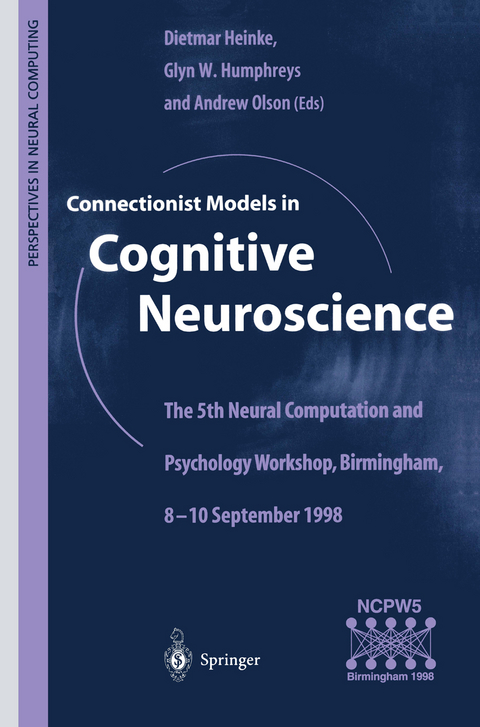
Connectionist Models in Cognitive Neuroscience
Springer London Ltd (Verlag)
978-1-85233-052-1 (ISBN)
Language Processes.- The SPLIT Model of Visual Word Recognition: Complementary Connectionist and Statistical Cognitive Modelling.- Modelling Early Stages of Word Recognition: Case and the Peripheral Dyslexias.- Competitive Queuing and Spelling: Modelling Acquired Dysgraphia.- Neuropsychologically Plausible Sequence Generation in a Multi-Layer Network Model of Spelling.- Connectionist Dissociations, Confounding Factors and Modularity.- The Frontal Lobes and Episodic Memory.- Investigating the Role of Multimodal and Unimodal Cells of the Prefrontal Cortex Using a Computational Model of Working Memory.- Short Term Memory and Selection Processes in a Frontal-Lobe Model.- Experimenting with Models of the Frontal Lobes.- Towards an Emotional Robot: Simulating Hippocampal-Mediated Anxiety.- A Connectionist Model for Frequency Effects in Recall and Recognition.- Semantic Memory.- Semantic Judgement Errors in Parkinson’s Disease: The Role of Priming.- Category-Specific Deficits in a Self-Organizing Model of the Lexical-Semantic System.- What Causes Lexical Access Difficulties in Dementia? The Role of Covert Category-Specificity.- Feature Distributions and Experimental Evaluation in a Connectionist Model of Semantic Memory.- Stochastic Double Dissociations in Distributed Models of Semantic Memory.- Systematicity and Specialization in Semantics.- Vision, Attention and Action.- Unsupervised Detection of Illusory Contours.- Modelling Adaptation in the Human Oculomotor System.- A Study of the Neuronal Encoding of Categorization with the Use of a Kohonen Network.- A Connectionist Model of Categorization Response Times.- Modelling Emergent Attentional Properties.- The Role of Feedback Connections in Task-Driven Visual Search.- A Neuronal Model of Binding and Selective Attention forVisual Search.- Modelling Selective Processing in Vision and Action.- Attention and the Control of Action: An Investigation of the Effects of Selection on Population Coding of Hand and Eye Movement.- Author Index.
| Erscheint lt. Verlag | 5.2.1999 |
|---|---|
| Reihe/Serie | Perspectives in Neural Computing |
| Zusatzinfo | 51 Illustrations, black and white; XVI, 299 p. 51 illus. |
| Verlagsort | England |
| Sprache | englisch |
| Maße | 155 x 235 mm |
| Themenwelt | Informatik ► Grafik / Design ► Digitale Bildverarbeitung |
| Informatik ► Theorie / Studium ► Künstliche Intelligenz / Robotik | |
| Naturwissenschaften ► Biologie ► Humanbiologie | |
| Naturwissenschaften ► Biologie ► Zoologie | |
| ISBN-10 | 1-85233-052-X / 185233052X |
| ISBN-13 | 978-1-85233-052-1 / 9781852330521 |
| Zustand | Neuware |
| Informationen gemäß Produktsicherheitsverordnung (GPSR) | |
| Haben Sie eine Frage zum Produkt? |
aus dem Bereich


